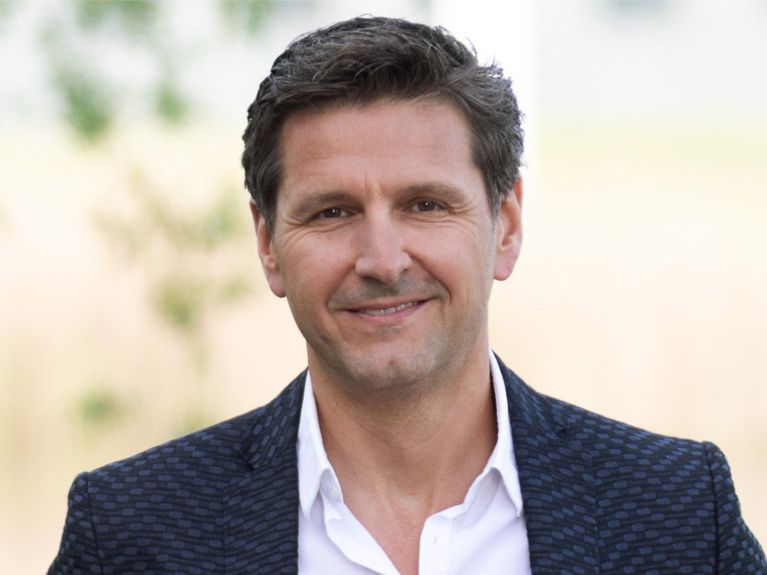Arya News - How German companies are advancing electronics and electrical engineering – from microchips to the Internet of Things.
Our modern world is barely conceivable without electric energy. That has a lot to do with German engineering: Werner von Siemens presented the so-called dynamo-electric principle in 1867. It flooded homes with light and in 1879 put the world’s first electric railway on the tracks. Transmission lines and power plants followed. They supplied first smaller businesses, then entire cities with electricity. In 1914, every second electric machine in the world originated from two German companies: Siemens and AEG.
Turnover of almost 240 billion euros a year
Even today, electrical engineering and the electronics industry form a pillar of the Germany economy. The sector makes a significant contribution to Germany’s GDP with a turnover of almost 240 billion euros a year. More than 14,000 companies secure around 900,000 jobs. Measured by the number of employees, this makes it the second-largest industrial sector in Germany after mechanical engineering. Its strength lies particularly in research and development: Some 100,000 employees work in this sector, with investments exceeding nine billion euros annually. The sector’s pioneering spirit is reflected in well over 13,000 patent applications a year, making it the driving force behind one in three innovations in the entire manufacturing industry.
Backbone of the digital world
The electronics industry’s product portfolio is wide-ranging and extends from industrial goods, such as automation systems and medical technology, to consumer goods including household appliances. Microchips play a particularly important role in this context. They form the backbone of the digital world, because they’re found almost everywhere – in smartphones, computers, vehicles and refrigerators. And they are just as necessary for the energy transition as for electric vehicles or artificial intelligence.
“You can basically unscrew any device and find a circuit board inside. Literally nothing works without these components”, according to Andreas Urschitz, chairman of the ZVEI Electronic Components and Systems (ECS) trade association and executive board member of German electronics group Infineon.

Andreas Urschitz, head of the ECS association and Infineon executive board member © Infineon / Tobias Eble
Catch-up race in semiconductors
The core element of microchips is now often contactless switches measuring just a few nanometres in size, known as transistors. Semiconductors, that is to say the materials from which they are made, therefore assume a key position. While 21 per cent of semiconductors were still produced in Europe in 2000, this figure has now fallen to just eight per cent, with Germany accounting for three per cent of the market. The European Chip Act aims to ensure that the market share of European chips rises to 20 per cent by 2030 given high levels of public and private investment. German companies are especially strong in so-called “legacy chips”, which are made using older but proven manufacturing processes. These are important in the automotive sector, the energy sector and in other high-performance electronic applications. German companies are also leading in sensor technology, the development of specialised microprocessors and photonics, which uses light to capture, process and transmit information.
Despite its relatively small share of actual chip production, Germany together with Japan, the USA and the Netherlands contributes a large proportion of the equipment used in chip production. “Germany exports more than it imports if you take into account not only the trade in finished chips, but also the manufacturing equipment and raw materials. Dependencies in global semiconductor production are therefore not one-sided, but mutual”, says Lisandra Flach, head of the ifo Centre for Foreign Trade.

Lisandra Flach, head of the ifo Centre for Foreign Trade © ifo Institut | Elias Hassos
Extensive networking
One of the most dynamic growth fields for the German electronics sector is the networking of devices and system – the so-called Internet of Things, abbreviated to IoT. IoT technologies can be found in almost all areas of life – from industrial production to private homes. These include thermostats, electricity meters and intelligent lighting systems connected via the internet. One of the greatest challenges in such smart home solutions is the data exchange among different systems, which is not yet standardised. German companies are well positioned here: Bosch Smart Home is for example committed to the “Matter standard”, which enables different devices to seamlessly interact.
Major opportunities for the Internet of Things
German industry is particularly impressive when it comes to the Industrial Internet of Things (IIoT), also referred to as Industry 4.0 . Combination with AI applications results in major opportunities here: “No one else has such valuable industry data at their fingertips, and AI models are useless without high-quality data sets”, says AI researcher Kristian Kersting from TU Darmstadt. The integration of IoT technologies into industrial applications is supported by powerful software platforms, such as those offered by German software giant SAP. The combination of automation technology with intelligent networking enables more efficient production processes, predictive maintenance and flexible manufacturing concepts. The Bosch Group, for example, has successfully transformed itself from a traditional automotive supplier into a leading supplier of sensor technology, AI solutions and networked products. Experts see the healthy mix of hardware and software expertise as the recipe for success in international competition.
Subscribe to our newsletter
Email address
First name
Last name
Language German
English
Spanish
I have read and accepted the data protection statement .
Subscribe
Thank you for signing up!
We have sent you a confirmation email. Please confirm your email address so that we can send you our newsletter in the future.
An error has occurred. Please try again later.